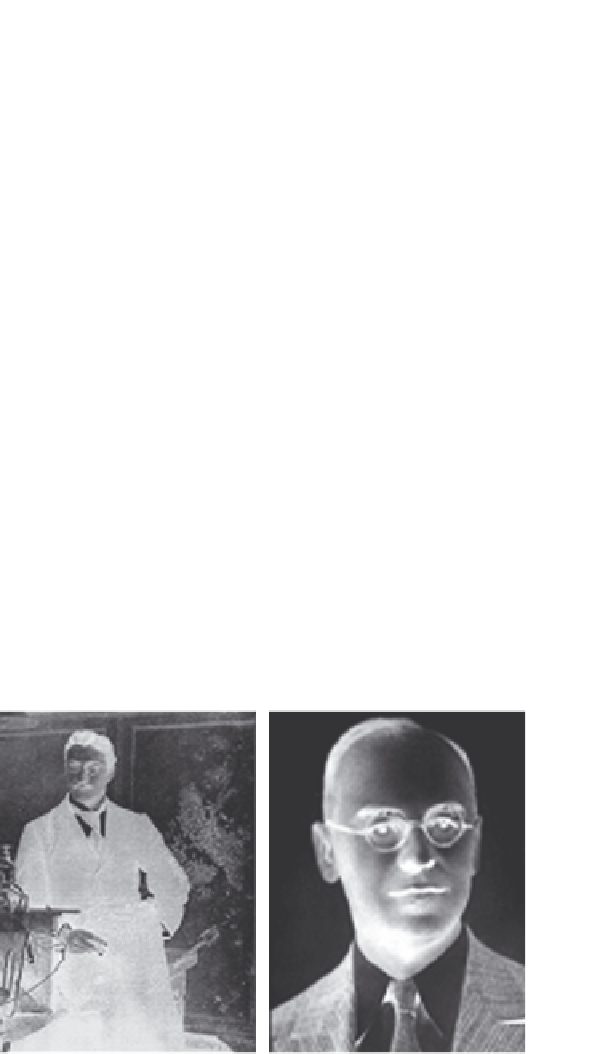Biomedical Engineering Reference
In-Depth Information
11.4.2.1 History
Franz Fischer (1877
1935) (
Figure 11.4
)
developed the FTS catalytic reaction in the 1920s at the Kaiser Wilhelm
Institute for Coal Research (presently Max Planck Institute) at Mulhelm. It
was prompted by the dire need of Germany, during the Second World War,
which was rich in coal but had very little access to petroleum. So, many
plants were built with this technology to produce liquid fuel from coal. After
the war, these plants ceased to operate primarily due to increased availability
and reduced price of crude oil.
The interest in FTS started rising again owing to its importance in the
production of oil from biomass (Kreutz et al., 2008). Since then the original
work in Germany's extensive research has been carried out on this synthesis
reaction. More than 7500 references and citations are available in a Web site
dedicated to this project (
http://www.fischer-tropsch.org/
).
1947) and Hans Tropsch (1889
11.4.2.2 Products
FTS reaction produces a range of hydrocarbon for use as transport fuel like gas-
oline, diesel, and as chemical feedstock. Its products include some desirable
products like olefins, paraffins, and alcohols, and some undesirable products
like methane, aldehyde, acids, ketone, and carbon. Of these, olefins, paraffins,
and alcohols are the most desirable products. For gasoline, the transportation
fuel, desired products are in the olefins in hydrocarbon in carbon range C
5
C
10
.
(Probstein and Hicks, 2006, p. 128). Methane is an undesirable product of
Franz Fischer
Hans Tropsch
FIGURE 11.4
Photographs of two inventors of the FTS process, Franz Fischer and Hans
Tropsch.




Search WWH ::

Custom Search